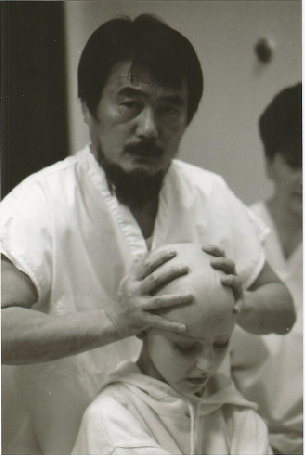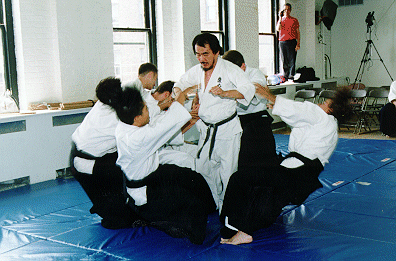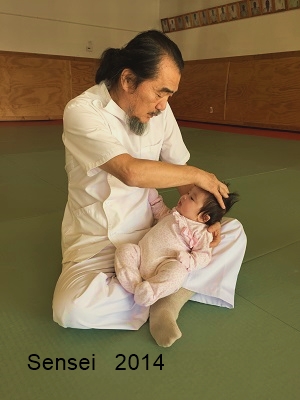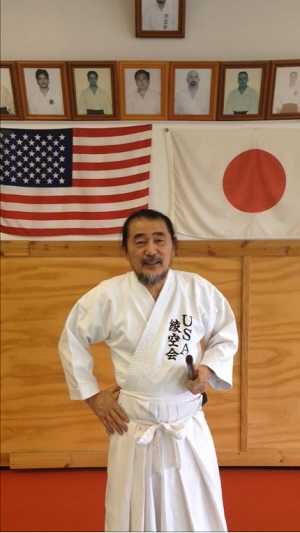Your cart is currently empty!

About Sensei
Sensei Katsumi Niikura (Sensei)
Has been aware of the presence of ki energy since his childhood. While playing outdoors, he often wondered how the carp in the river managed to stay immobile against the flow of the current. Did it have something to do with how it breathed? 
He had been interested in the respiration since his childhood. Katsumi Niikura Sensei At the age of 12 years, he began studying the martial arts and found that in helping his fellow students with their injuries, something like energy seemed to leave his hands. His first attempt to devote his life to using Ki for healing came when his own daughter was diagnosed with brain cancer. He applied Ki energy while she underwent conventional medical treatment and when she recovered, he continued to refine his conventional medical treatment of other illnesses.
He believes that one of the benefits of Ki therapy is that it supplements the weakened energy of the body and helps to alleviate the discomfort often associated with conventional medical treatments such as surgery. Today he teaches Ki, which is not a martial art, but an instrument for healing that in its own way is equally powerful.
1955 : Age 12: began to study karate and judo. At the time, karate was not well thought of; many people in Japan associated it with organized crime and criminal classes ( much the same perception that the same people in America of boxing today), so Niikura-san studied Karatedo ‘on the sly’, without his parents knowledge. In the late ’50s, he won a Junior Championship at the prefecture level ( equivalent to our state level), and a neighbor, reading of it in the paper, came over to congratulate his father. That is how his father found out that Niikurasan was studying karatedo.
1961 : He graduated from high school and began to study Karatedo. At the same time he was increasing the intensity of his physical training, Niikura began to seek a balance in his life by pursuing restful, mental training in the form of ikebana, the Japanese style of flower arranging. As members of the warrior class of Japan had for hundreds of years, he found that ikebana added harmony to his life and an inner peace that allowed him to continue to excel to greater plateaus in his martial arts career. 
1963 : Elevated to rank of Shodan (first degree black belt) . In this same year, Niikura-san began to study other styles of karate as well as Aikido.
1967 : Elevated to Sandan (third degree black belt) . He won the All -Japan/Asia Karatedo Championship in kumite (sparring). Niikura was also awarded his Ikebana teacher’s license.
1968 : Began study of Iaido (samurai swordsmanship) . Niikura made his first trip to the United States this year, where he gave karate exhibitions and became aquatinted with Don Madden (head coach for the United States of America Karate Federation (USAKF). Niikura donated his share of the proceeds from these exhibitions to the Cancer Society. This trip was the first of several exchange visits between U.S. and Japanese martial arts students coordinated by Niikura and Madden.
1973 : At age 30, he founded International Ryokukai Karatedo , a new karate style based on the best of what he had discovered through his study of a variety of karate styles, plus Aikido and Iaido.
1976 : International Ryokukai Brazil, the first Ryokukai dojo outside Japan, was founded in Brazil. During this period, five to six students coached by Niikura-San were named Japanese national junior champions in free style wrestling each year.
1979 : Niikura accepted Tokey Hill, an American sport karate competitor, as a student at his Japanese dojo. Hill trained with Niikura daily, and was eventually promoted by Niikura to the rank of sandan.
1980 : Tokey Hill become World Light Heavyweight champion in kumite; he was the first American ever to place
so highly in karate competition.
1984 : Niikura came to the USA and in the process moved the home dojo of international Ryokukai to Sterling Heights Michigan.



Leave a Reply
You must be logged in to post a comment.